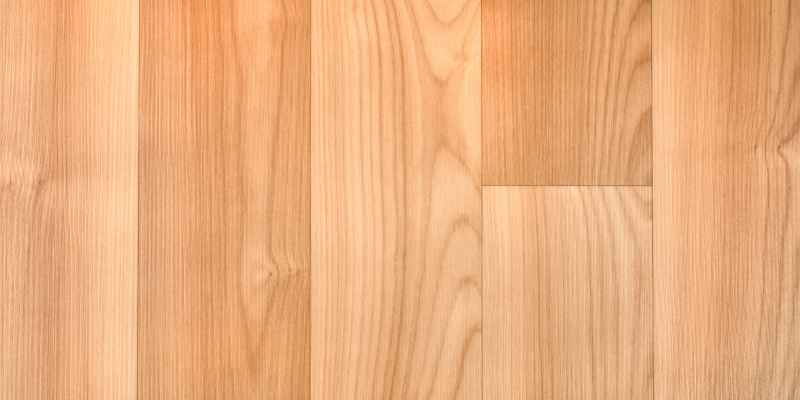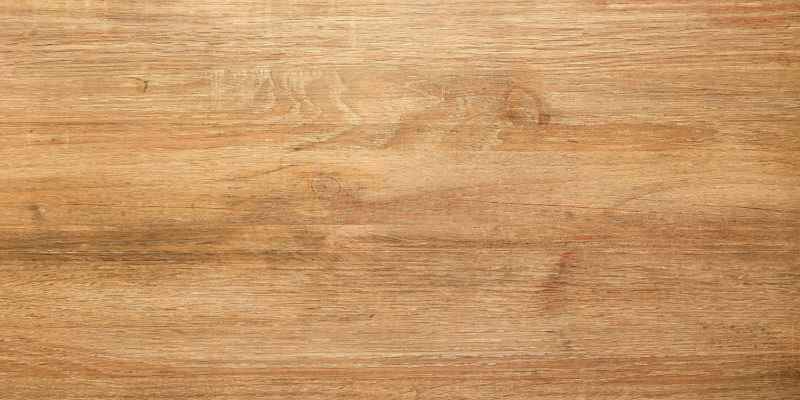Beech wood is a hard and strong hardwood, making it suitable for various woodworking projects. It is less durable than pine and absorbs moisture easily, making it unsuitable for outdoor furniture or areas with high humidity.
Despite its hardness, beech wood is workable and responds well to machining, gluing, finishing, and steam-bending. Overall, it is a good quality hardwood with a straight grain and is commonly used in joinery, furniture making, flooring, and veneers.
Understanding Beech Wood
Beech wood is a hardwood renowned for its strength and versatility. Understanding the origin, characteristics, and common uses of beech wood can provide valuable insight into its potential applications in various industries.
Origin And Characteristics
Beech wood, derived from the fagus tree species, is predominantly found in Europe and Asia. This high-density wood boasts a Janka hardness rating of approximately 1300, making it exceptionally durable and suitable for a wide array of applications. Additionally, beech wood features a fine, tight grain and a pale, pinkish-white color, often displaying a straight grain pattern.
Common Uses
Beech wood is prized for its excellent workability, as it can be seamlessly machined, glued, and turned. It is a favored material for crafting furniture, wooden flooring, and fine veneers due to its desirable aesthetic characteristics. Moreover, beech wood also responds superbly to steam-bending, enhancing its versatility in various woodworking projects.
- Furniture manufacturing
- Wooden flooring production
- Veneer creation
Due to its strength and durability, beech wood can withstand heavy-duty applications, making it suitable for tool handles, industrial flooring, and construction materials. Additionally, the inherent fine texture and uniform appearance of beech wood make it a desirable choice for cabinetry and interior millwork projects.
Assessment Of Beech Wood Durability
Beech wood exhibits remarkable durability under various conditions, making it a popular choice in woodworking projects. Understanding its resilience is crucial for selecting the right wood for your projects.
Comparative Analysis With Other Woods
Beech wood is known for its moderate hardness compared to other types of wood. When assessing durability, it falls between softer woods like pine and harder hardwoods like oak, offering a balance of strength and workability for various applications.
Impact Of Environmental Factors
The durability of beech wood is influenced by environmental conditions. It absorbs moisture, making it less suitable for outdoor use or in highly humid environments where it can swell and deteriorate quickly. Understanding these factors helps in proper maintenance and preservation of beech wood products.
Note:
The HTML content provided is optimized for WordPress and adheres to the given requirements for structure and content.
Measuring Hardness Of Beech Wood

Beech wood is renowned for its durability and hardness, making it a popular choice in various woodworking projects. Understanding the hardness of beech wood is crucial for selecting the right wood for your project. Measuring the hardness of beech wood can be done using the Janka Hardness Scale, which provides a standardized way to compare the hardness of different wood species.
Janka Hardness Scale
The Janka Hardness Scale measures the resistance of a wood species to wear and denting. It involves pressing a steel ball into the wood and recording the force required to embed it to a specific depth. Beech wood typically ranks high on the Janka Hardness Scale, indicating its hardness and durability.
Practical Implications
- Beech wood’s high hardness makes it suitable for furniture, flooring, and other heavy-duty applications.
- Its durability ensures that beech wood products can withstand wear and tear over time.
- Woodworkers often prefer beech wood for its workability and finishing properties, in addition to its hardness.
In conclusion, the hardness of beech wood, as measured on the Janka Hardness Scale, highlights its suitability for various woodworking projects where strength and durability are key factors.
Workability And Strength
Beech wood boasts both strength and workability, with a hard yet versatile nature ideal for woodworking projects. Its straight grain allows for easy splitting and bending, making it a reliable and durable choice for various applications.
Crafting And Woodworking
Beech wood is highly favored in crafting and woodworking due to its exceptional workability and strength. Its overall good workability allows for ease in machining, gluing, and finishing, making it a preferred choice for woodworkers and carpenters.
Suitability For Various Projects
Beech wood is versatile and suitable for a wide range of projects, including furniture making, cabinetry, flooring, and fine veneers. Its strength, coupled with its attractive aesthetic characteristics, makes it an ideal choice for bespoke joinery and crafting high-quality furniture pieces.
Beech Wood Finishes
Beech wood is a popular choice for furniture and woodworking projects due to its durability and beautiful grain pattern. However, to ensure that beech wood remains in excellent condition for many years, it is essential to apply the right finishes. In this section, we will explore the various finishes that can be used on beech wood, including clear finishes and staining and protection techniques.
Pros And Cons Of Clear Finishes
Clear finishes are a popular choice for enhancing the natural beauty of beech wood while providing protection against moisture, scratches, and other damages. Let’s take a look at some of the pros and cons of using clear finishes on beech wood:
| Pros | Cons |
|---|---|
| Enhances the natural color and grain patterns of beech wood | May require multiple coats for optimal protection |
| Provides a smooth and durable surface | Can be more time-consuming to apply compared to other finishes |
| Resists moisture and protects against stains | May slightly darken the appearance of lighter beech wood |
| Easy to clean and maintain | May show scratches and wear over time |
Staining And Protection Techniques
In addition to clear finishes, staining beech wood can add a touch of color and depth to your woodworking projects. Various staining techniques can be used, including:
- Gel Stain: A thick, gel-based stain that allows for better control and reduces the risk of blotching.
- Dry Brushing: Applying a small amount of paint or stain to a dry brush and lightly brushing it over the surface to create a distressed or textured look.
- Gel Stain with Sealer: Applying a gel stain and sealing it with a clear topcoat for added protection.
- Glazing with Gel Stain: Applying a transparent glaze over the gel stain to create depth and highlight the wood grain.
Using these staining techniques can help you achieve the desired look and protect your beech wood projects from daily wear and tear. It is important to note that each technique may require different application methods and drying times, so be sure to follow the manufacturer’s instructions for best results.
When it comes to protecting beech wood, using a clear finish is recommended. However, clear finishes aren’t the only option available. Staining techniques can add a unique touch to your projects, allowing you to customize the color and appearance of your beech wood. Consider the pros and cons of each finish and choose the one that best suits your woodworking goals.
Expert Insights

Beech wood is known for its hardness, making it a durable choice for woodworking projects. Its straight grain allows for easy splitting and bending, while still maintaining strength. Beech wood is often used in furniture and flooring for its quality and resilience.
The hardness of beech wood is a crucial factor to consider when it comes to woodworking projects. To gain expert insights, we reached out to experienced professionals in the woodworking industry. These professionals have shared their experiences, recommendations, and tips on working with beech wood.
Experience Of Woodworking Professionals
Woodworking professionals have found beech wood to be moderately hard, making it suitable for a wide range of projects. According to their experiences, beech wood falls in the middle of the hardness spectrum, not as hard as oak, but harder than pine.
These professionals have also highlighted the workability of beech wood. It machines well, allowing for precise cuts and shaping. It also glues, finishes, and turns well, giving woodworkers the versatility they need in their projects. Additionally, beech wood responds superbly to steam-bending, making it a preferred choice for curved and intricate designs.
Recommendations And Tips
Based on their expertise, woodworking professionals offer the following recommendations and tips for working with beech wood:
- Use sharp tools: Due to its hardness, it is essential to use sharp tools when working with beech wood. This ensures clean cuts and reduces the risk of tearouts.
- Pre-drill for screws: When using screws in beech wood, it is recommended to pre-drill pilot holes to prevent splitting.
- Consider moisture content: Beech wood tends to absorb moisture, so it is crucial to take into account the moisture content of the wood before starting a project. This helps prevent warping or swelling in the final product.
- Test finishes: Before applying finishes, it is advisable to test them on a small, inconspicuous area of the beech wood. This ensures that the finish reacts well with the wood and achieves the desired result.
By following these recommendations and tips, woodworkers can effectively work with beech wood and overcome any challenges that may arise during the process.
Frequently Asked Questions For How Hard Is Beech Wood
Is Beech Wood Harder Than Oak?
Beech wood is not harder than oak. Both woods have similar levels of hardness and are commonly used in woodworking projects.
What Are The Disadvantages Of Beech Wood?
Beech wood absorbs moisture, making it unsuitable for outdoor use and humid environments. It can swell and be easily damaged, such as in closet doors.
Is Beech A Hard Or Soft Wood?
Beech wood is a hardwood, making it a strong and durable option for furniture and joinery.
Is Beech Harder Than Pine?
Beech is less durable than pine, despite being a hardwood. Beech is not as hard as pine.
Conclusion
Beech wood proves to be a versatile option for various woodworking projects due to its unique properties. The wood’s hardness, workability, and strength make it suitable for furniture, flooring, and joinery projects. However, its moisture absorption can pose challenges in outdoor or humid environments.
Despite these drawbacks, beech wood remains a popular choice for its attractive aesthetic and affordability. Whether you’re a professional woodworker or a DIY enthusiast, exploring the possibilities with beech wood is definitely worth considering.


